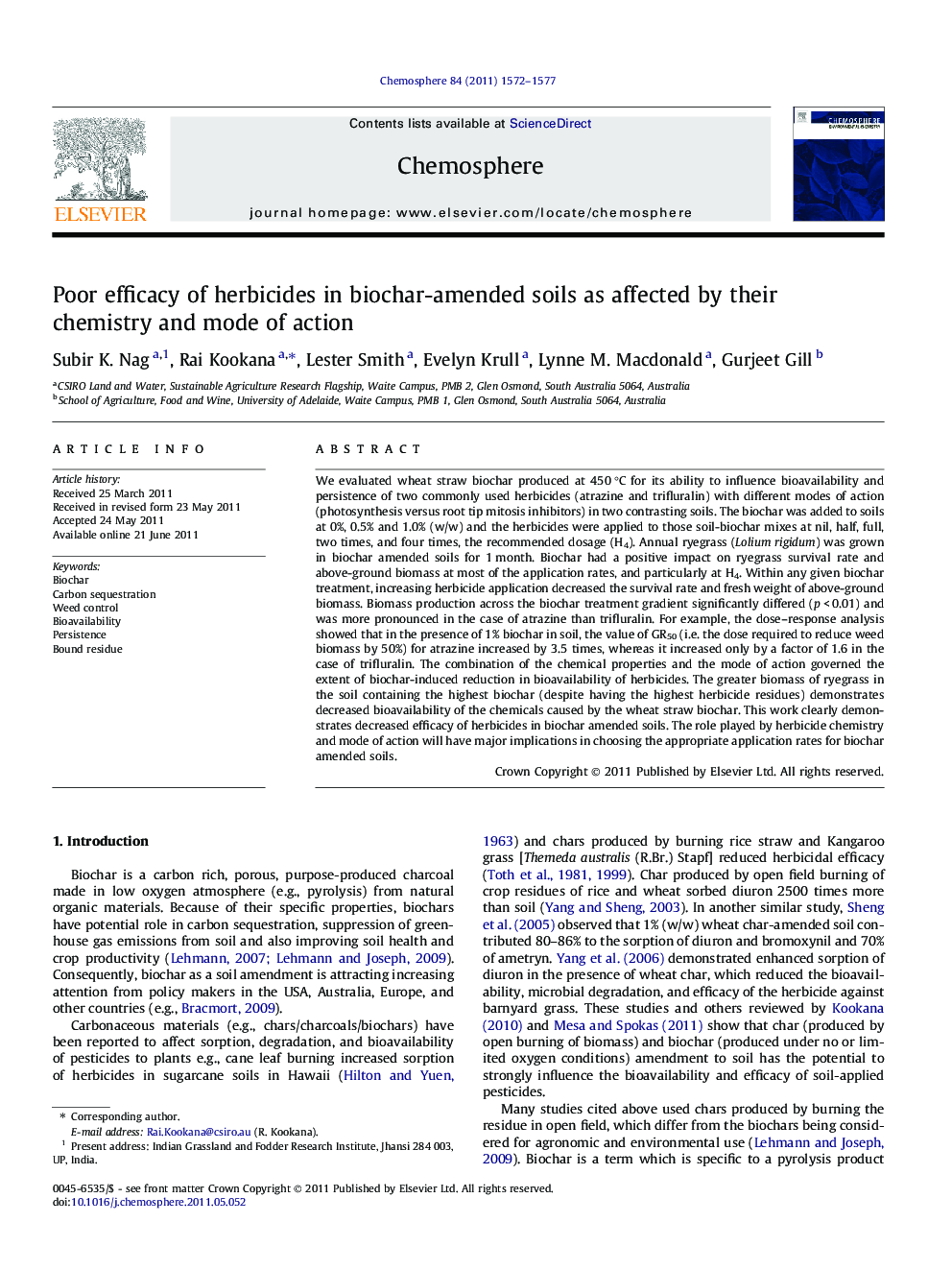| کد مقاله | کد نشریه | سال انتشار | مقاله انگلیسی | نسخه تمام متن |
|---|---|---|---|---|
| 6311705 | 1307558 | 2011 | 6 صفحه PDF | دانلود رایگان |

We evaluated wheat straw biochar produced at 450 °C for its ability to influence bioavailability and persistence of two commonly used herbicides (atrazine and trifluralin) with different modes of action (photosynthesis versus root tip mitosis inhibitors) in two contrasting soils. The biochar was added to soils at 0%, 0.5% and 1.0% (w/w) and the herbicides were applied to those soil-biochar mixes at nil, half, full, two times, and four times, the recommended dosage (H4). Annual ryegrass (Lolium rigidum) was grown in biochar amended soils for 1 month. Biochar had a positive impact on ryegrass survival rate and above-ground biomass at most of the application rates, and particularly at H4. Within any given biochar treatment, increasing herbicide application decreased the survival rate and fresh weight of above-ground biomass. Biomass production across the biochar treatment gradient significantly differed (p < 0.01) and was more pronounced in the case of atrazine than trifluralin. For example, the dose-response analysis showed that in the presence of 1% biochar in soil, the value of GR50 (i.e. the dose required to reduce weed biomass by 50%) for atrazine increased by 3.5 times, whereas it increased only by a factor of 1.6 in the case of trifluralin. The combination of the chemical properties and the mode of action governed the extent of biochar-induced reduction in bioavailability of herbicides. The greater biomass of ryegrass in the soil containing the highest biochar (despite having the highest herbicide residues) demonstrates decreased bioavailability of the chemicals caused by the wheat straw biochar. This work clearly demonstrates decreased efficacy of herbicides in biochar amended soils. The role played by herbicide chemistry and mode of action will have major implications in choosing the appropriate application rates for biochar amended soils.
⺠The addition of biochar to soil reduced the efficacy of atrazine herbicide by 3.5 times and at the same time increased its persistence. ⺠The effect was much smaller for trifluralin which has a different mode of action. ⺠The chemical properties of the herbicide and its mode of action together determine the biochar-induced reduction in herbicide efficacy. ⺠Biochar amendment to soil would require increased input of herbicides and thus may have direct economic implication.
Journal: Chemosphere - Volume 84, Issue 11, September 2011, Pages 1572-1577